This new 6-page publication of the UF/IFAS Department of Soil and Water Sciences is intended to address agronomic and environmental issues related to phosphorus (P) dynamics in Florida agricultural soils and soil test P interpretation and management for agricultural crops. This document aims to provide science-based information to agricultural clientele, including commercial producers, small farmers, Extension agents, crop consultants, landscape professionals, representatives of the fertilizer industry, state and local agencies, students and instructors of high schools and colleges, researchers, and interested Florida citizens. Written by Rao Mylavarapu, Yuncong Li, Maria Silveira, Cheryl Mackowiak, and Mabry McCray.
https://edis.ifas.ufl.edu/ss699
Tag: Nutrient Management
Hemp Fertilization: Current Knowledge, Gaps and Efforts in Florida: A 2020 Report
Hemp is an annual herbaceous plant that may be grown for fiber, seed, or flowers. Starting in April 2020, the Florida Department of Agriculture and Consumer Services began accepting applications for cultivation of hemp in Florida, with the potential for building a $20-$30 billion industry in the state. The statewide UF/IFAS Industrial Hemp Pilot Project is researching aspects of agronomic production for hemp cultivation. While a few other state soil testing laboratories provide soil tests and nutrient recommendations based on research and experience, at this time no Florida-specific data on nutrient requirements and fertilization are available. This new 5-page article, written by Rao Mylavarapu, Zachary Brym, Luis Monserrate, and Michael J. Mulvaney and published by the UF/IFAS Department of Soil and Water Sciences, provides a summary of published and personal communications from different states on hemp fertilization.
https://edis.ifas.ufl.edu/ss689
Guidelines for Pomegranate Nutrient Management in Florida
Many Florida growers are interested in the potential of pomegranate as an alternative fruit crop. The first flush of flowers produces the best quality fruit, and climatic conditions have a great impact on the timing of flowering. Proper fertilization is critical to promote healthy canopy development, minimize nutrient disorders, and maximize fruit yield and quality. This new 5-page article, written by Shinsuke Agehara, Weining Wang, and Ali Sarkhosh and published by the UF/IFAS Horticultural Sciences Department, provides guidelines for pomegranate nutrient management in Florida.
https://edis.ifas.ufl.edu/hs1347
Iron for Florida Turfgrasses
Iron (Fe) is commonly applied to enhance turfgrass color. Understanding the dynamics of Fe both in the plant and in the soil could greatly enhance your nutrient management programs. The objective of this 4-page publication is to explain the function of Fe within the plant, describe the Fe sources available for turfgrasses, and identify which forms of Fe are most effective in improving turfgrass quality. Written by Travis Shaddox and J.B. Unruh and published by the UF/IFAS Department of Environmental Horticulture, January 2018.
http://edis.ifas.ufl.edu/ep551
Guide to Olive Tree Nutrition in Florida
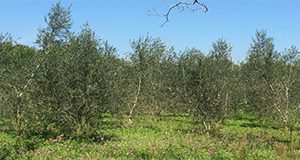 A burgeoning olive industry already exists in the southeastern United States, but research and Extension information regarding olive fertilization recommendations in Florida is limited. While there are data and recommendations for olive from the University of California, the University of Georgia (UGA), and other institutions around the world, there are no data from which we can derive Florida-specific recommendations. This 6-page fact sheet uses many of the existing recommendations for mature, high-density, and traditional grove spacing as guidelines until data specific to Florida production are generated. It discusses leaf tissue sampling procedures, leaf tissue sufficiency ranges, nitrogen fertility, phosphorus and potassium fertility, boron, concerns for olive production in Florida, and other resources for olive production in the state. Written by Michael J. Mulvaney, Rao Mylavarapu, Peter C. Andersen, Mack Thetford, and Jennifer L. Gillett-Kaufman, and published by the UF Agronomy Department, May 2016.
A burgeoning olive industry already exists in the southeastern United States, but research and Extension information regarding olive fertilization recommendations in Florida is limited. While there are data and recommendations for olive from the University of California, the University of Georgia (UGA), and other institutions around the world, there are no data from which we can derive Florida-specific recommendations. This 6-page fact sheet uses many of the existing recommendations for mature, high-density, and traditional grove spacing as guidelines until data specific to Florida production are generated. It discusses leaf tissue sampling procedures, leaf tissue sufficiency ranges, nitrogen fertility, phosphorus and potassium fertility, boron, concerns for olive production in Florida, and other resources for olive production in the state. Written by Michael J. Mulvaney, Rao Mylavarapu, Peter C. Andersen, Mack Thetford, and Jennifer L. Gillett-Kaufman, and published by the UF Agronomy Department, May 2016.
http://edis.ifas.ufl.edu/ag405
Lowering Soil pH to Optimize Nutrient Management and Crop Production
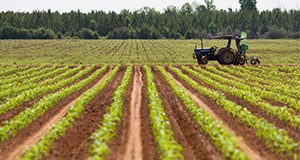
Because temperatures are relatively high and it rains a lot in the region, mineral soils in the southeastern United States tend to be naturally acidic. Managing soils for both pH and nutrients helps maintain soil fertility levels and ensure economic agricultural production. If they are not maintained in the 6.0 to 6.5 pH range, which is best for most crops, most mineral soils in the Southeast will gradually return to their natural acidic state and their fertility levels will drop. In order to keep the soil in the right range, farmers have been encouraged to make routine applications of lime. Calibrated lime requirement tests are part of standard soil tests in this region, but getting the balance right can be tricky. This 4-page fact sheet written by Rao Mylavarapu, George Hochmuth, Cheryl Mackowiak, Alan Wright, and Maria Silevira and published by the Soil and Water Science Department explains the factors that contribute to increased soil pH and describes methods for reducing soil pH that will reduce the chances of either under- or over-liming the soil.
http://edis.ifas.ufl.edu/ss651
Understanding Nitrogen Transformations and Cycling for Sweet Corn Production in Sandy Soils
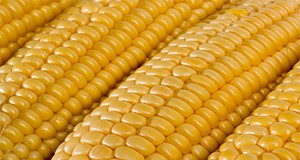 Because sandy soils have low water and nutrient-holding capacities and Florida experiences high rainfall periodically, optimizing fertilizer use efficiency for sweet corn production is challenging. The preparation of nitrogen budgets and the implementation of effective management strategies can help farmers overcome these obstacles. This 4-page fact sheet discusses major concerns which call for nitrogen management in sweet corn production, nitrogen budget preparation and interpretation, and important differences between farm-gate and soil system budgets. Written by Rishi Prasad and George Hochmuth, and published by the UF Department of Soil and Water Science, May 2015.
Because sandy soils have low water and nutrient-holding capacities and Florida experiences high rainfall periodically, optimizing fertilizer use efficiency for sweet corn production is challenging. The preparation of nitrogen budgets and the implementation of effective management strategies can help farmers overcome these obstacles. This 4-page fact sheet discusses major concerns which call for nitrogen management in sweet corn production, nitrogen budget preparation and interpretation, and important differences between farm-gate and soil system budgets. Written by Rishi Prasad and George Hochmuth, and published by the UF Department of Soil and Water Science, May 2015.
http://edis.ifas.ufl.edu/ss643
What is 4R nutrient stewardship?

A new and innovative approach to Best Management Practices for fertilizer application known as 4R nutrient stewardship is available, to ensure the environmental, social, and economical sustainability of commercial crop production. This 3-page fact sheet focuses on the basic concepts of the 4R nutrient stewardship principles for commercial crop production. Written by Guodong Liu, Kelly Morgan, Yuncong Li, Lincoln Zotarelli, James DeValerio, and Qingren Wang, and published by the UF Department of Horticultural Sciences, July 2015.
http://edis.ifas.ufl.edu/hs1264
Controlled-Release and Slow-Release Fertilizers as Nutrient Management Tools
 There are many fertilizer sources available for commercial crop production. The characteristics of each fertilizer type determine whether its use poses an advantage or a disadvantage to a farmer. This 6-page fact sheet focuses on how to select the right fertilizer to enhance profitability and satisfy best management practices (BMPs). Written by Guodong Liu, Lincoln Zotarelli, Yuncong Li, David Dinkins, Qingren Wang, and Monica Ozores-Hampton, and published by the UF Department of Horticultural Sciences, October 2014. (UF/IFAS Photo by Thomas Wright)
There are many fertilizer sources available for commercial crop production. The characteristics of each fertilizer type determine whether its use poses an advantage or a disadvantage to a farmer. This 6-page fact sheet focuses on how to select the right fertilizer to enhance profitability and satisfy best management practices (BMPs). Written by Guodong Liu, Lincoln Zotarelli, Yuncong Li, David Dinkins, Qingren Wang, and Monica Ozores-Hampton, and published by the UF Department of Horticultural Sciences, October 2014. (UF/IFAS Photo by Thomas Wright)
http://edis.ifas.ufl.edu/hs1255
How to Calculate a Partial Nitrogen Mass Budget for Potato
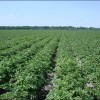 This 6-page fact sheet provides information on the importance of nitrogen budgets for potato cultivation and discusses the steps in preparing the budget. It allows growers to understand the inputs, cycling, and exports of nutrients within and away from the farm, develop a nutrient budget, and analyze best management practices (BMPs) for their farm. The results will be increased N fertilizer use efficiency, increased environmental protection, and reduced economic losses associated with potato cultivation. This document will also aid county agents, environmental management advisors, and government agency staff members who help farmers improve and implement nutrient BMPs to protect water quality. Written by Rishi Prasad and George Hochmuth, and published by the UF Department of Soil and Water Science, December 2013.
This 6-page fact sheet provides information on the importance of nitrogen budgets for potato cultivation and discusses the steps in preparing the budget. It allows growers to understand the inputs, cycling, and exports of nutrients within and away from the farm, develop a nutrient budget, and analyze best management practices (BMPs) for their farm. The results will be increased N fertilizer use efficiency, increased environmental protection, and reduced economic losses associated with potato cultivation. This document will also aid county agents, environmental management advisors, and government agency staff members who help farmers improve and implement nutrient BMPs to protect water quality. Written by Rishi Prasad and George Hochmuth, and published by the UF Department of Soil and Water Science, December 2013.
http://edis.ifas.ufl.edu/ss614
Methods for Measuring Controlled-Release Fertilizer Nitrogen Release Used for Vegetable Production
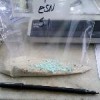 Enhanced-efficiency fertilizers are a group of fertilizers that reduce the risk of nutrient loss to the environment and subsequently increase fertilizer use efficiency. This increase may be accomplished through maintaining nutrients in the root zone by physical barriers, reduced solubility, or retaining nutrients in a less leachable form. This 7-page fact sheet examines laboratory, growth chamber, greenhouse, and field methods for measuring nitrogen release in controlled-release fertilizers. Written by Monica Ozores-Hampton and Luther C. Carson, and published by the UF Department of Horticultural Sciences, August 2013.
Enhanced-efficiency fertilizers are a group of fertilizers that reduce the risk of nutrient loss to the environment and subsequently increase fertilizer use efficiency. This increase may be accomplished through maintaining nutrients in the root zone by physical barriers, reduced solubility, or retaining nutrients in a less leachable form. This 7-page fact sheet examines laboratory, growth chamber, greenhouse, and field methods for measuring nitrogen release in controlled-release fertilizers. Written by Monica Ozores-Hampton and Luther C. Carson, and published by the UF Department of Horticultural Sciences, August 2013.
http://edis.ifas.ufl.edu/hs1227
Application of Surfactants in Commercial Crop Production for Water and Nutrient Management in Sandy Soil
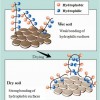 Water-repellent soils are unable to effectively adsorb or retain water. On these soils, water may simply pool on the surface or may move down preferred pathways, leaving large amounts of soil dry even when a large volume of water is applied. Thus, managing water and nutrients in sandy soils is often challenging. This 6-page fact sheet provides an overview of surfactants and how they may be used to better manage water and nutrients in sandy soils for vegetable and fruit production. Written by Guodong Liu, Monica Ozores-Hampton, Gene McAvoy, Ben Hogue, and Crystal A. Snodgrass, and published by the UF Department of Horticultural Sciences, October 2013.
Water-repellent soils are unable to effectively adsorb or retain water. On these soils, water may simply pool on the surface or may move down preferred pathways, leaving large amounts of soil dry even when a large volume of water is applied. Thus, managing water and nutrients in sandy soils is often challenging. This 6-page fact sheet provides an overview of surfactants and how they may be used to better manage water and nutrients in sandy soils for vegetable and fruit production. Written by Guodong Liu, Monica Ozores-Hampton, Gene McAvoy, Ben Hogue, and Crystal A. Snodgrass, and published by the UF Department of Horticultural Sciences, October 2013.
http://edis.ifas.ufl.edu/hs1230
Nitrogen Cycling and Management for Romaine and Crisphead Lettuce Grown on Organic Soils
 Lettuce has rapid growth and reaches harvest in 60–70 days in South Florida. This leads to high demands for nitrogen fertilization during the short growing season. A good N fertilization scheme should reduce costs, conserve natural resources, and minimize negative environmental impacts. The keys to using fertilizer efficiently are understanding the crop nutrient requirements to predict fertilizer needs and management as well as knowing the appropriate amounts to apply. Lettuce growers also need to know the nutritional status of the crop through soil and plant tissue testing. This 4-page fact sheet was written by Luis Santos, Alan L. Wright, Yigang Luo, Huangjun Lu, and D. Calvin Odero, and published by the UF Department of Soil and Water Science, September 2013.
Lettuce has rapid growth and reaches harvest in 60–70 days in South Florida. This leads to high demands for nitrogen fertilization during the short growing season. A good N fertilization scheme should reduce costs, conserve natural resources, and minimize negative environmental impacts. The keys to using fertilizer efficiently are understanding the crop nutrient requirements to predict fertilizer needs and management as well as knowing the appropriate amounts to apply. Lettuce growers also need to know the nutritional status of the crop through soil and plant tissue testing. This 4-page fact sheet was written by Luis Santos, Alan L. Wright, Yigang Luo, Huangjun Lu, and D. Calvin Odero, and published by the UF Department of Soil and Water Science, September 2013.
http://edis.ifas.ufl.edu/ss588
Nutrient Cycling in Grazed Pastures (SL376/SS578)
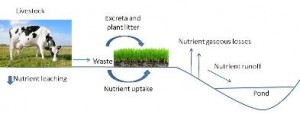 Many forage-based livestock production systems in Florida are characterized by extensive grazing with minimal inputs of commercial fertilizer and supplemental feed. In these systems, adequate soil fertility conditions are essential to sustain forage production. If nutrients become deficient, pasture and animal performance is reduced, and the economic returns of livestock operations may decline. This 3-page fact sheet discusses the different nutrient pathways in grazing pastures to help producers better understand how to promote nutrient cycling and pasture sustainability. Written by Maria L. Silveira, Joao M. B. Vendramini, Hiran M. da Silva, and Mariana Azenha, and published by the UF Department of Soil and Water Science, January 2013.
Many forage-based livestock production systems in Florida are characterized by extensive grazing with minimal inputs of commercial fertilizer and supplemental feed. In these systems, adequate soil fertility conditions are essential to sustain forage production. If nutrients become deficient, pasture and animal performance is reduced, and the economic returns of livestock operations may decline. This 3-page fact sheet discusses the different nutrient pathways in grazing pastures to help producers better understand how to promote nutrient cycling and pasture sustainability. Written by Maria L. Silveira, Joao M. B. Vendramini, Hiran M. da Silva, and Mariana Azenha, and published by the UF Department of Soil and Water Science, January 2013.
http://edis.ifas.ufl.edu/ss578
Rethinking the Role of Nitrogen and Phosphorus in the Eutrophication of Aquatic Ecosystems (SGEF190/SG118)
 For many years, environmental agencies have sought to improve the water quality of lakes and estuaries by reducing inputs of phosphorus. New research indicates that we must reduce both phosphorus and nitrogen to reverse eutrophication symptoms. This 3-page fact sheet was written by Karl Havens and Thomas Frazer, and published by the UF Department of Sea Grant, June 2012.
For many years, environmental agencies have sought to improve the water quality of lakes and estuaries by reducing inputs of phosphorus. New research indicates that we must reduce both phosphorus and nitrogen to reverse eutrophication symptoms. This 3-page fact sheet was written by Karl Havens and Thomas Frazer, and published by the UF Department of Sea Grant, June 2012.
http://edis.ifas.ufl.edu/sg118
Agricultural Management Options for Climate Variability and Change: Sensor-Based, Variable-Rate Nitrogen Management (AE487)
 Nitrogen fertilizer cost represents about 10%–15% of total farm costs for corn, cotton, and wheat in the Southeastern United States. The efficiency of nitrogen use can be highly variable for producers, so a sensor-based, variable-rate nitrogen application (SVNA) system has been developed for irrigated and dryland row crops to reduce production costs. Using sensor-based N application, there is a minimum 20% reduction in N usage. If that rate reduction were applied to all the cotton, corn, and wheat grown in the United States, CO2 emissions from N fertilizer production would be decreased by 2.7 million tons.
Nitrogen fertilizer cost represents about 10%–15% of total farm costs for corn, cotton, and wheat in the Southeastern United States. The efficiency of nitrogen use can be highly variable for producers, so a sensor-based, variable-rate nitrogen application (SVNA) system has been developed for irrigated and dryland row crops to reduce production costs. Using sensor-based N application, there is a minimum 20% reduction in N usage. If that rate reduction were applied to all the cotton, corn, and wheat grown in the United States, CO2 emissions from N fertilizer production would be decreased by 2.7 million tons.
This 4-page fact sheet was written by Wesley Porter, Ahmad Khalilian, Daniel Dourte, and Clyde Fraisse, and published by the UF Department of Agricultural and Biological Engineering, July 2012.
http://edis.ifas.ufl.edu/ae487
An Overview of Nutrient Budgets for Use in Nutrient Management Planning (SL361/SS562)
 For professionals responsible for ensuring water quality, this 4-page fact sheet describes the types and limitations of nutrient budgets. Written by Amy L. Shober, George Hochmuth, and Christine Wiese, and published by the UF Department of Soil and Water Science, November 2011.
For professionals responsible for ensuring water quality, this 4-page fact sheet describes the types and limitations of nutrient budgets. Written by Amy L. Shober, George Hochmuth, and Christine Wiese, and published by the UF Department of Soil and Water Science, November 2011.
http://edis.ifas.ufl.edu/ss562



